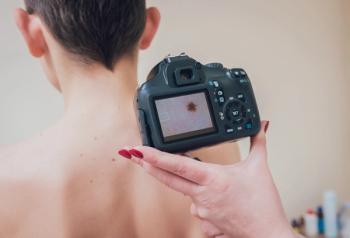
Winter Sun Protection: What You Need To Know

While it may be tempting to slack off on sun protection when the rays aren’t beating down, it’s imperative to stay vigilant through the darker winter months.
While it may be tempting to slack off on sun protection when the rays aren’t beating down, it’s imperative to stay vigilant through the darker winter months.
“Most ultraviolet rays from the sun can penetrate cloud cover and fog,” says Deborah S. Sarnoff, MD, president of The Skin Cancer Foundation. “So you can still sustain sun damage — which can lead to skin cancer and premature skin aging — during winter months.”
Ultraviolet B (UVB) rays, which are mainly responsible for sunburn, are the strongest in the summer. However, UVB rays are present year-round and can still burn and damage your skin in the colder months. Snow reflects up to 80 percent of the sun’s UV light, so the rays hit you twice, further increasing your risk of skin cancer and premature aging. Winter sports enthusiasts should take special care: Skiers and snowboarders are at an even greater risk because these sports take place at a higher altitude, where the thinner atmosphere absorbs less UV radiation.
Ultraviolet A (UVA) rays, which lead to tanning, dark spots and wrinkles, remain constant throughout the year and can penetrate through clouds and fog. UVA rays can also penetrate glass, so it’s still possible to damage your skin while spending a bright winter day indoors.
Winter Sun Strategies
Your first line of defense against sun damage is clothing. Covering up is easier in the winter — it’s cold! However, your face, head and neck tend to remain exposed year-round, and this is where most skin cancers occur. Don’t forget your wide-brimmed hat and UV-blocking sunglasses before heading out. A hat keeps you warm while keeping UV rays from damaging your face and scalp, and sunglasses protect your eyes while also fighting snow glare.
Apply a broad-spectrum sunscreen with an SPF of at least 15 or higher daily to all exposed skin, and make sure to cover often-missed spots like the tops of your ears, around the eyes and near the hairline. Consider choosing a moisturizing sunscreen with ingredients like lanolin or glycerin to combat dry winter skin. Finally, try to avoid the peak sun hours (generally between 10 AM and 2 PM in the winter months), and seek shade when you can.
Winter is no reason to let up on the sun-safe habits you practice during the summer. Continuing sun protection efforts through the colder, cloudier months of the year reduces your risk of premature skin aging and developing the world’s most common cancer.
For more information, visit SkinCancer.org.



